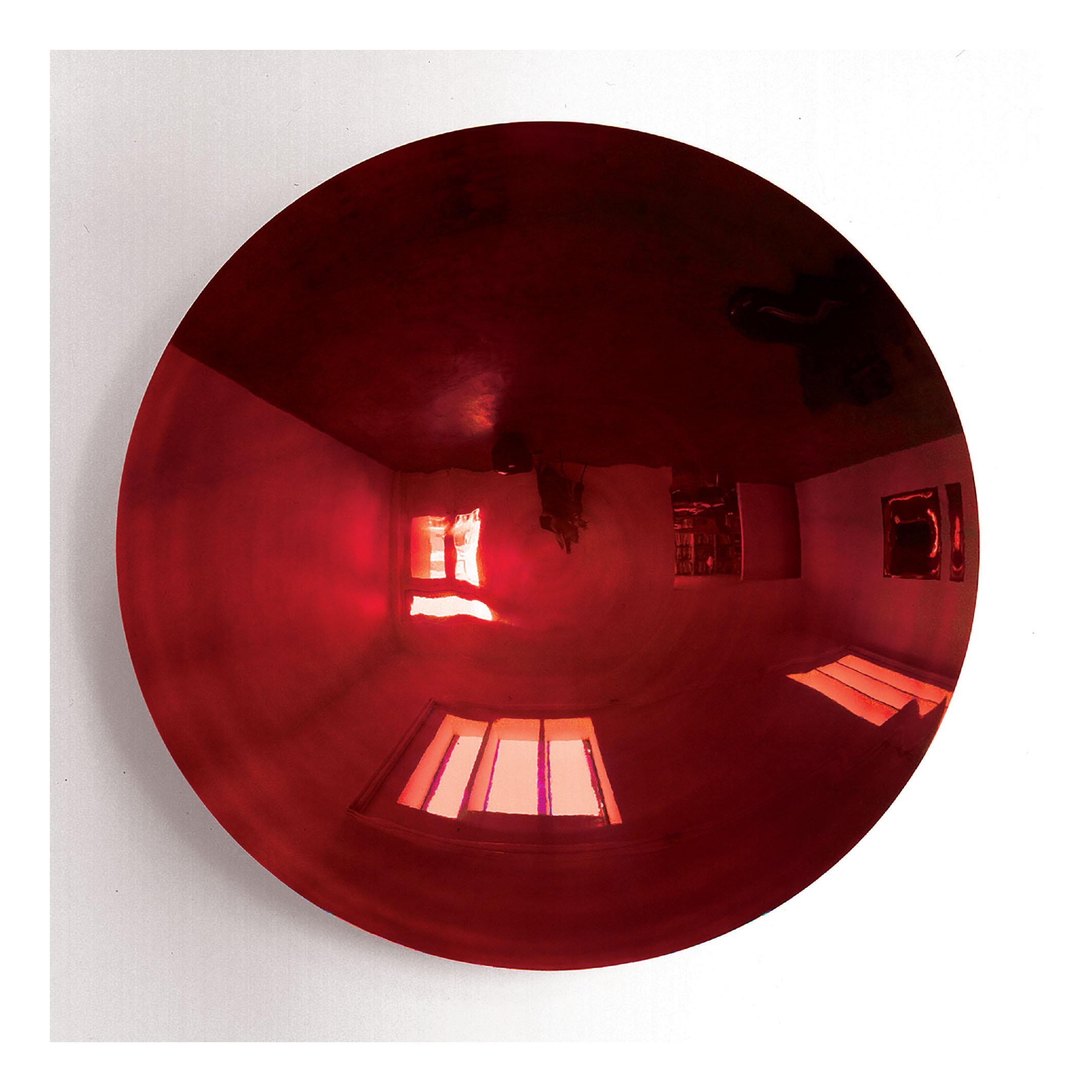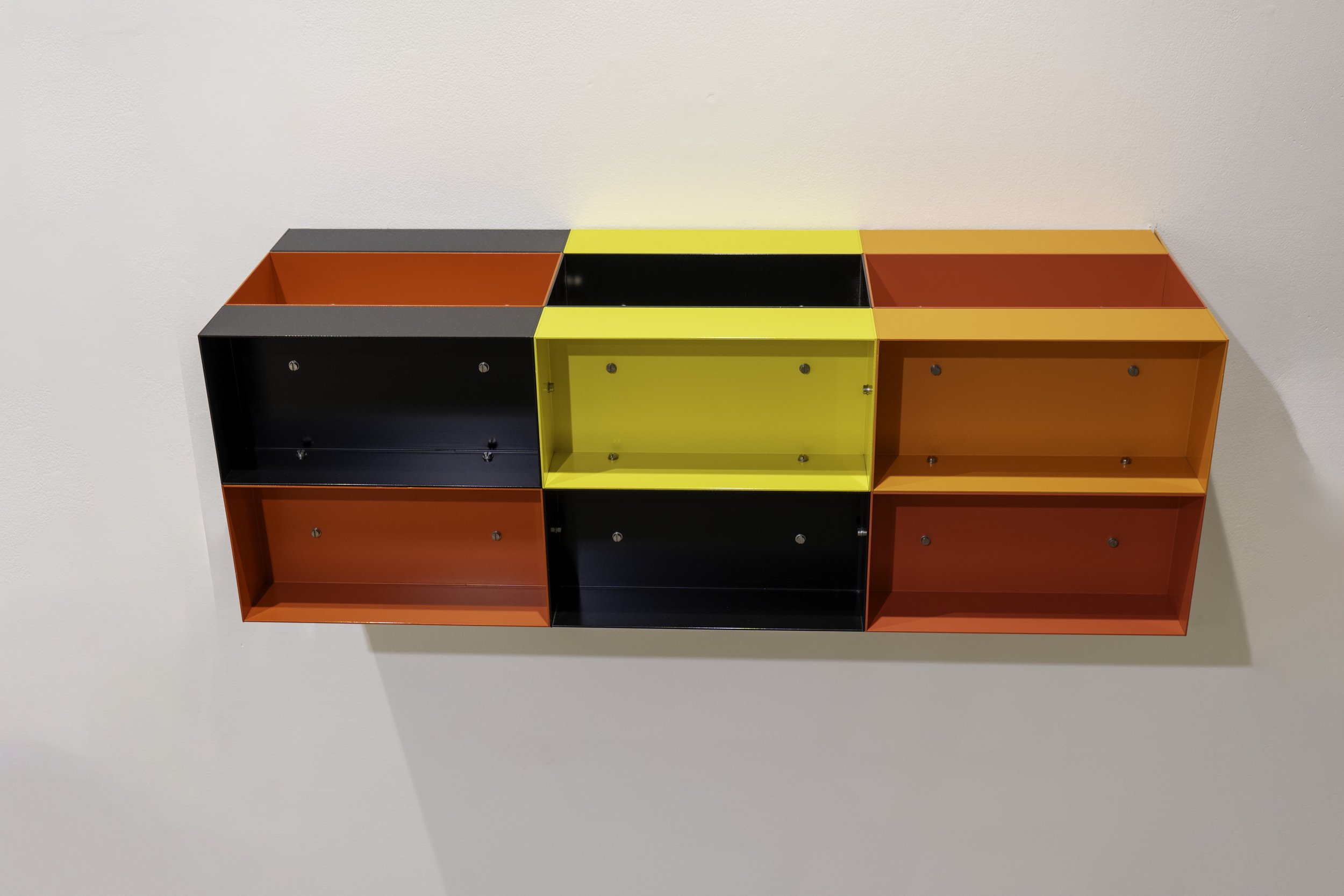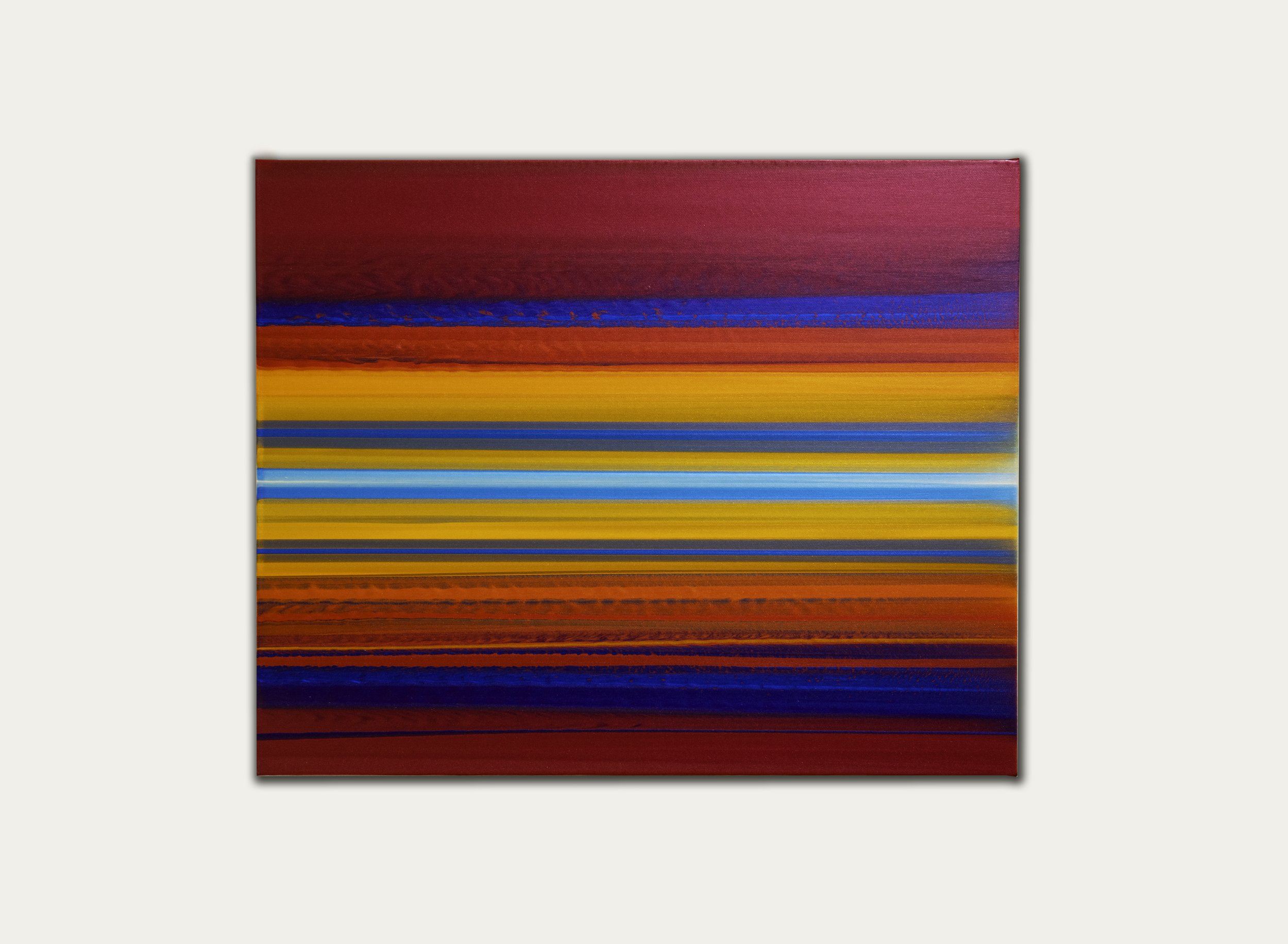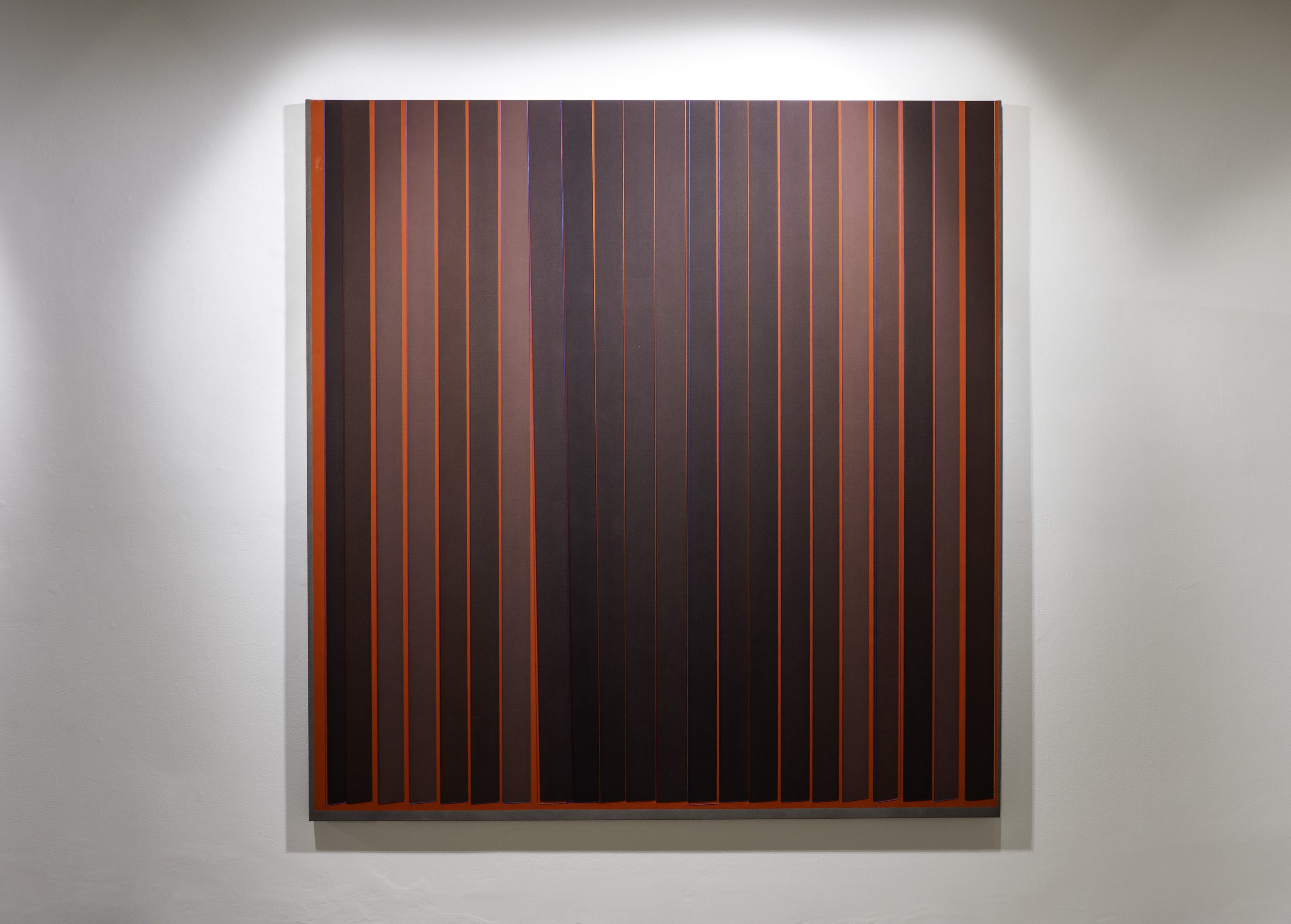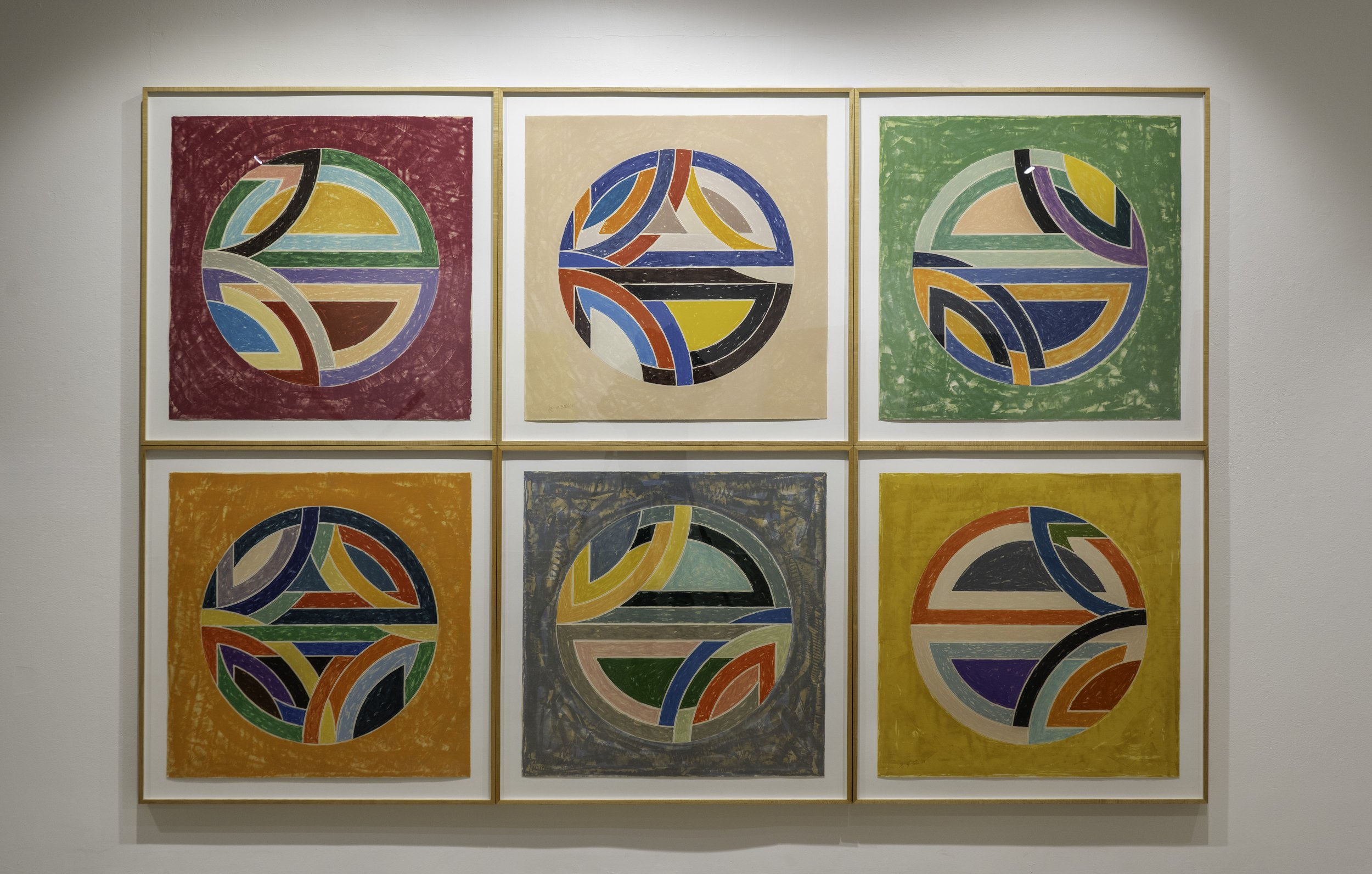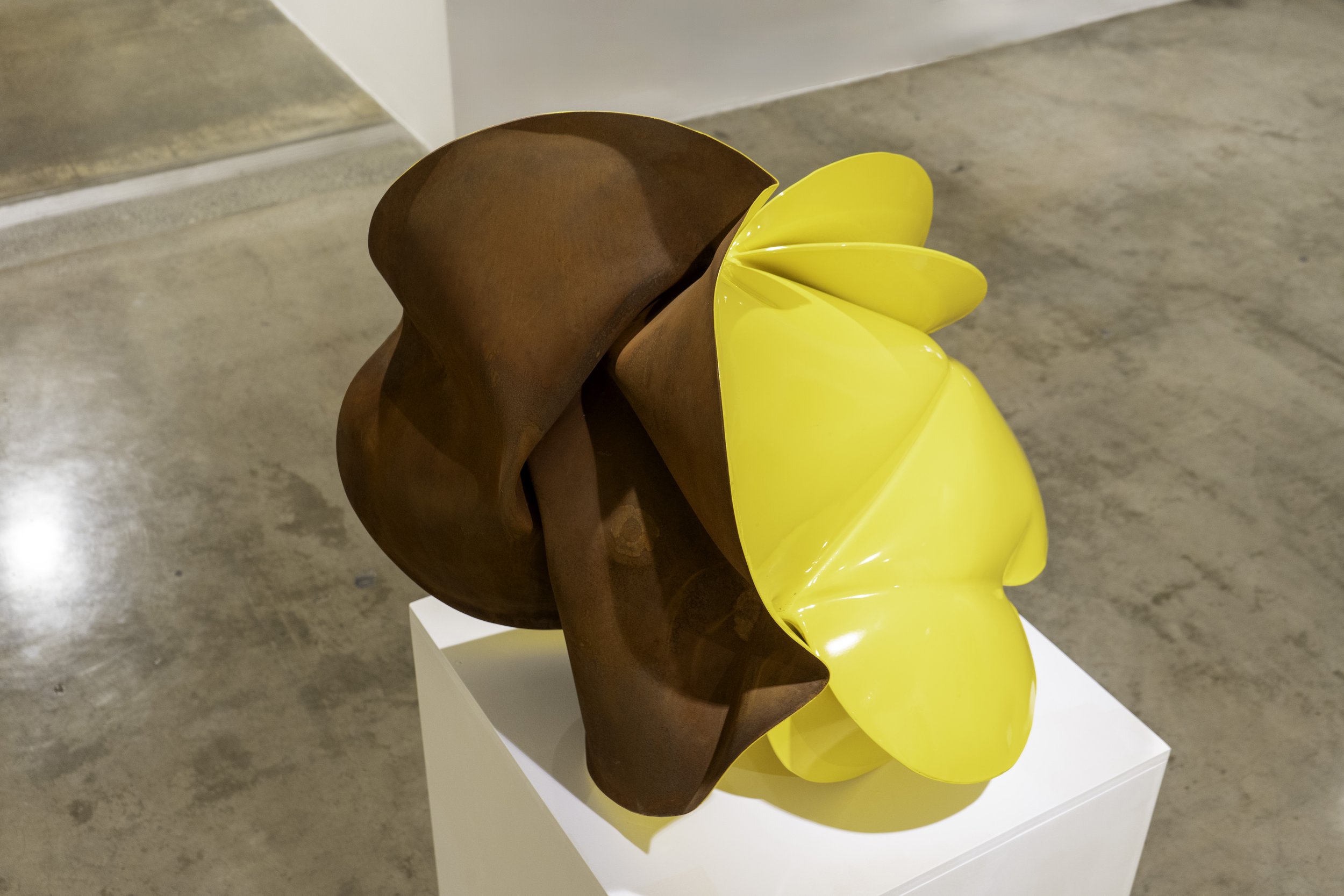Exhibition Synopsis
Back to Basics focuses on simple form and the use of color to impart meaning by featuring a diverse international roster of contemporary artists from the Frederick R. Weisman Art Foundation in Los Angeles. Through exploring the range of geometric abstraction from 1960s Colorfield painting, Hard-Edge, and Minimalism to the present, this exhibition considers how ‘less’ can be ‘more.’ The artists who pioneered geometric abstraction advanced a new way of seeing-one based on basic forms, powerful shapes, and essential colors. Their goal was to reach something vital and fundamental in human experience. This goal is still being studied by the continuing work of the artist represented in Back to Basics.
This exhibition features 51 works of art ranging in date from 1947 to 2023. It includes works by the great names in postwar art- Josef Albers, Kenneth Nolan, Donald Judd, Sol LeWitt, and Ellsworth Kelly- and by a new, younger generation of artists- Anish Kapoor, Tim Bavington, and Isaac Brest, to name but a few. Other artists in the exhibition, such as Pard Morrison, Joe Lloyd, and Gary Stephan, use imprecise freehand strokes to create simple yet provocative explorations of form, color, and light. These works present over half a century of artists investigating the timeless power of simplicity.
Although the art is united by a central vocabulary of simple, geometric forms, the message and meaning of each work differ dramatically. Josef Albers, the German-born American artist and educator, was interested primarily in perception. He inspired generations of artists through his teaching, first at the famed Bauhaus School in Germany, then at Black Mountain College, and finally at Yale University. He is represented by Homage to the Square: Upon Arrival, 1958. In this iconic series he used a single format-three offset concentric squares-to explore the subjective experience of color. His goal was to test how different pigments arranged side-by-side can produce radically different perceptual and psychological effects, such as the feeling of forms advancing or receding in space.
Ellsworth Kelly also used geometry to explore perception but did so in a different way. While an art student studying in Paris in the 1950s, he became captivated by fascinating abstract shapes he noticed on the streets, such as a shadow or the area defined by a partially opened door, Shapes such as these-ignored and overlooked by most people- became the basis of his refined and elegant Painted Wall Sculptures of 1982, a series of five brightly colored, eccentrically shaped panels. The artist credits his experience as a bird-watch as a child and as a camouflage artist during World War II as essential to influencing his visual sensibility.
While artists such as Albers and Kelly explored perception, the British-Indian sculptor Anish Kapoor was most interested in transcendence. Since the mid-1990s, he has worked with highly reflective surfaces of polished stainless steel. These sculptures are mirror-like, reflecting or distorting the viewer and surroundings. Perhaps the best-known of his sculptures in the United States is Cloud Gate, a monumental public sculpture in Chicago’s Millenium Park, resembling a giant mirrored bean. He is represented at the Weisman Foundation by Blood Mirror III, 2000. This mirrored, deep red bowl - which seems to be present and absent at the same time - offers a transcendental experience that combines the artist’s interests in both Western and Eastern culture.
Tim Bavington combines digital explorations with artistic expression. He bases his abstract paintings on contemporary music, often choosing rock-and-roll songs. Using a computer program, he translates notes into vertical bands of color. He then carefully paints his pattern of notes using an airbrush on his canvas. His paintings study the connection between the visual and the aural, using abstraction to cross into the realm of other sensory phenomena.
As the Bauhaus artist Paul Klee once said, “Art does not reproduce the visible; rather, it makes it visible.” The artists in this stunning exhibition show that geometry is a creative tool that can be used to explore the realms of ideas and perception, of seeing and knowing, while stripping away any sense of portraiture, landscape, or iconography to demonstrate that less can truly be more. Nothing is overworked: Back to Basics is the simple evolution of universal artistic sensibility through the essential exploration of color, medium, and space.
Billie Milam Weisman, Director, Frederick R. Weisman Art Foundation
Installation Images
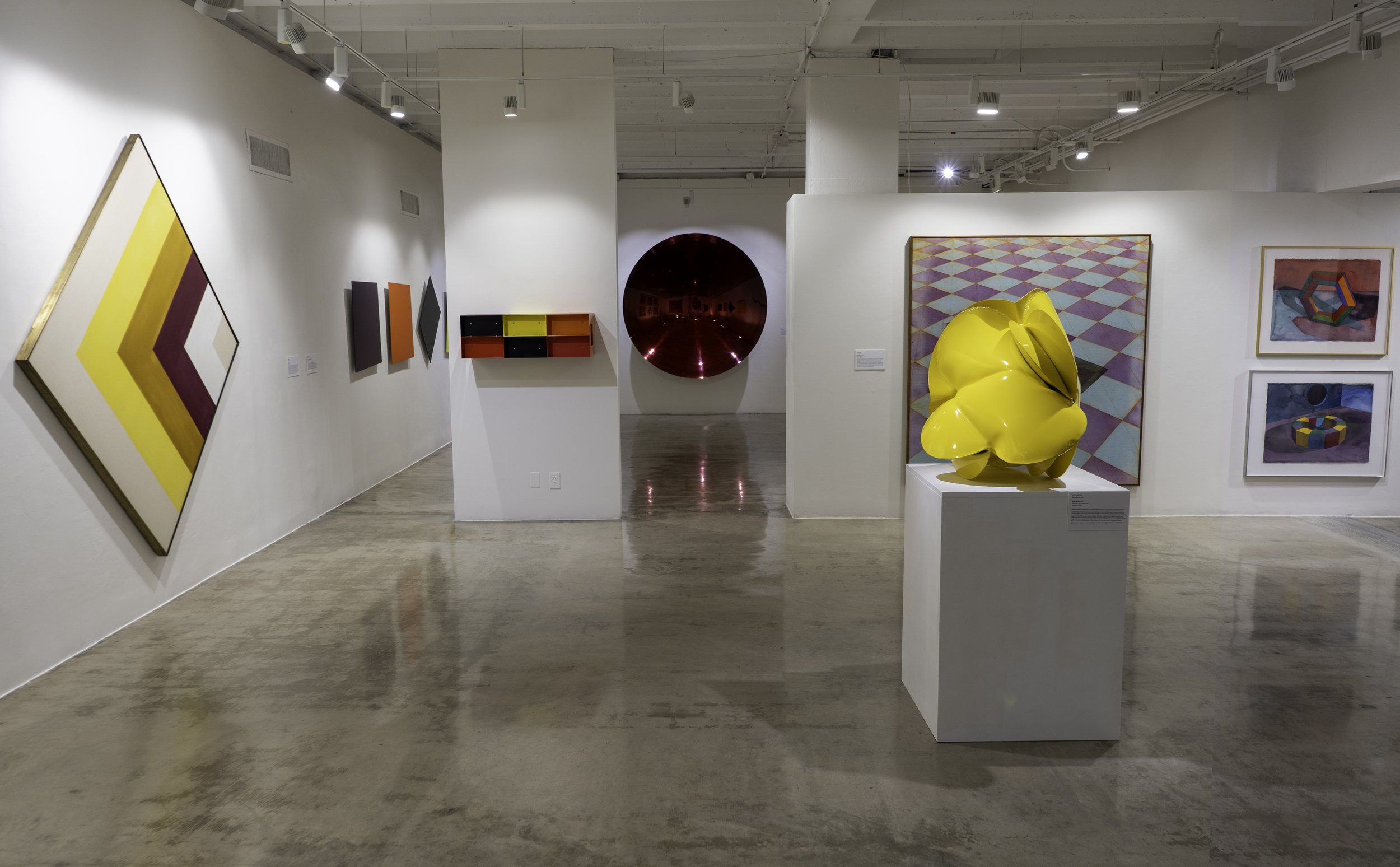
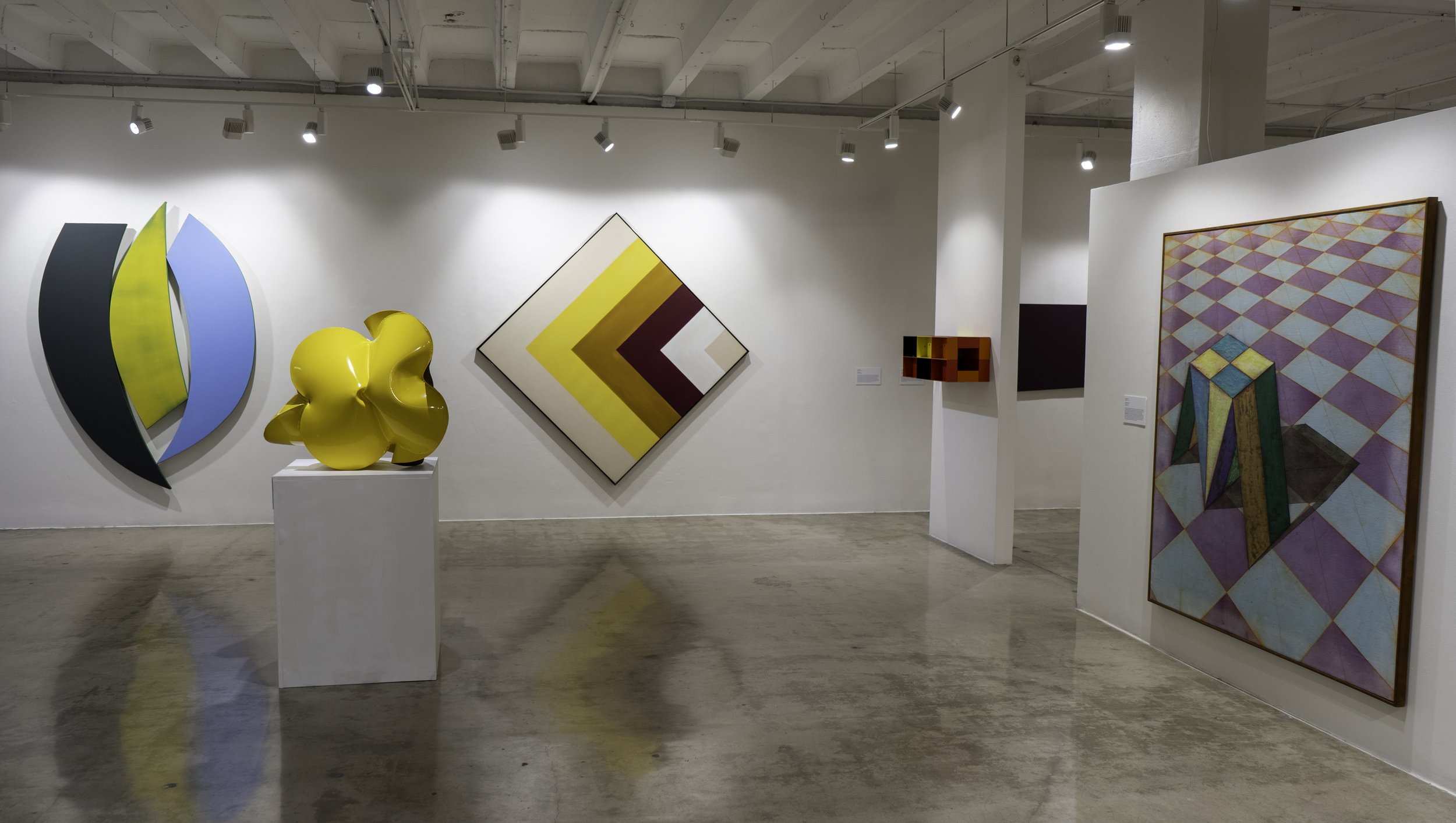
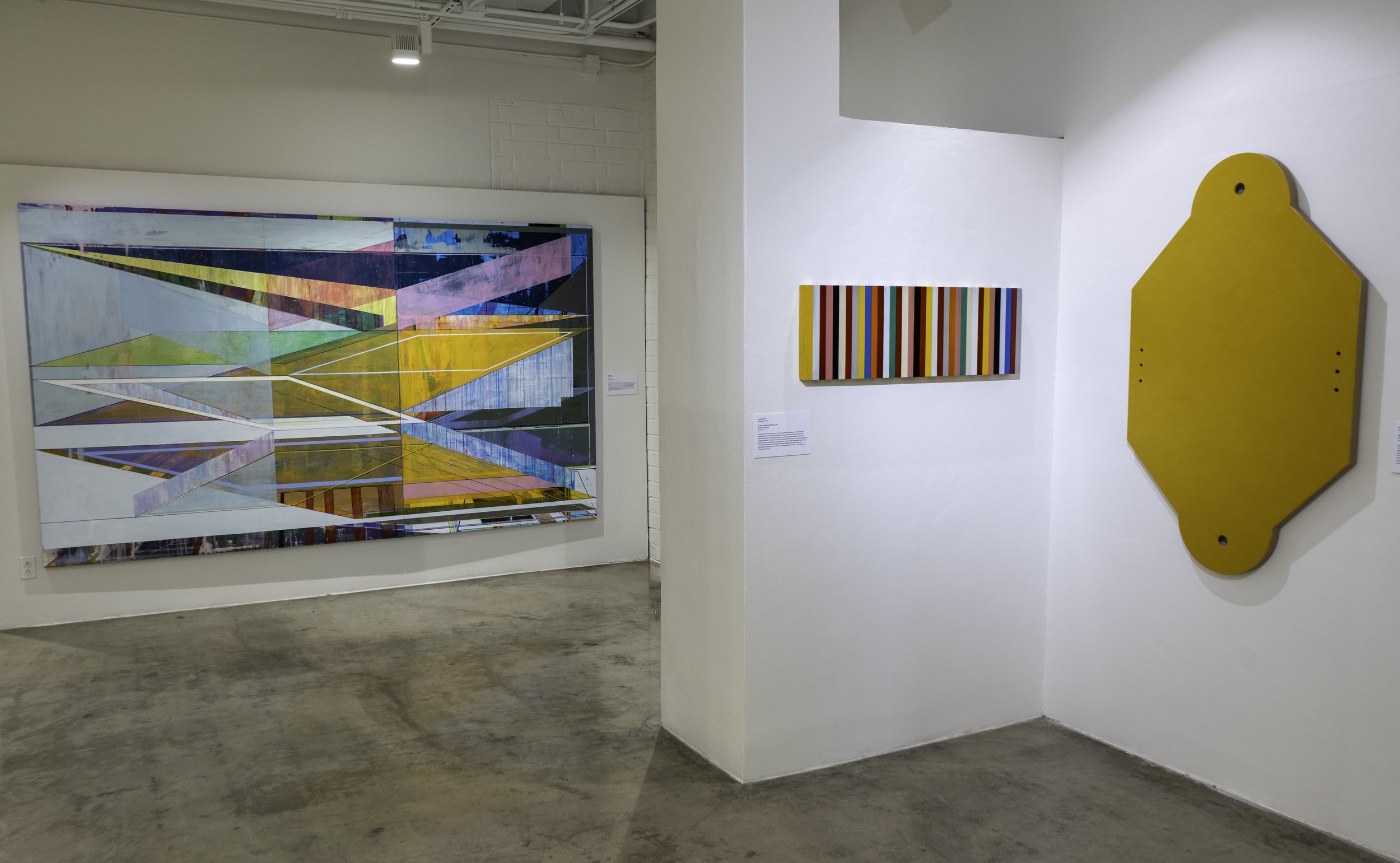
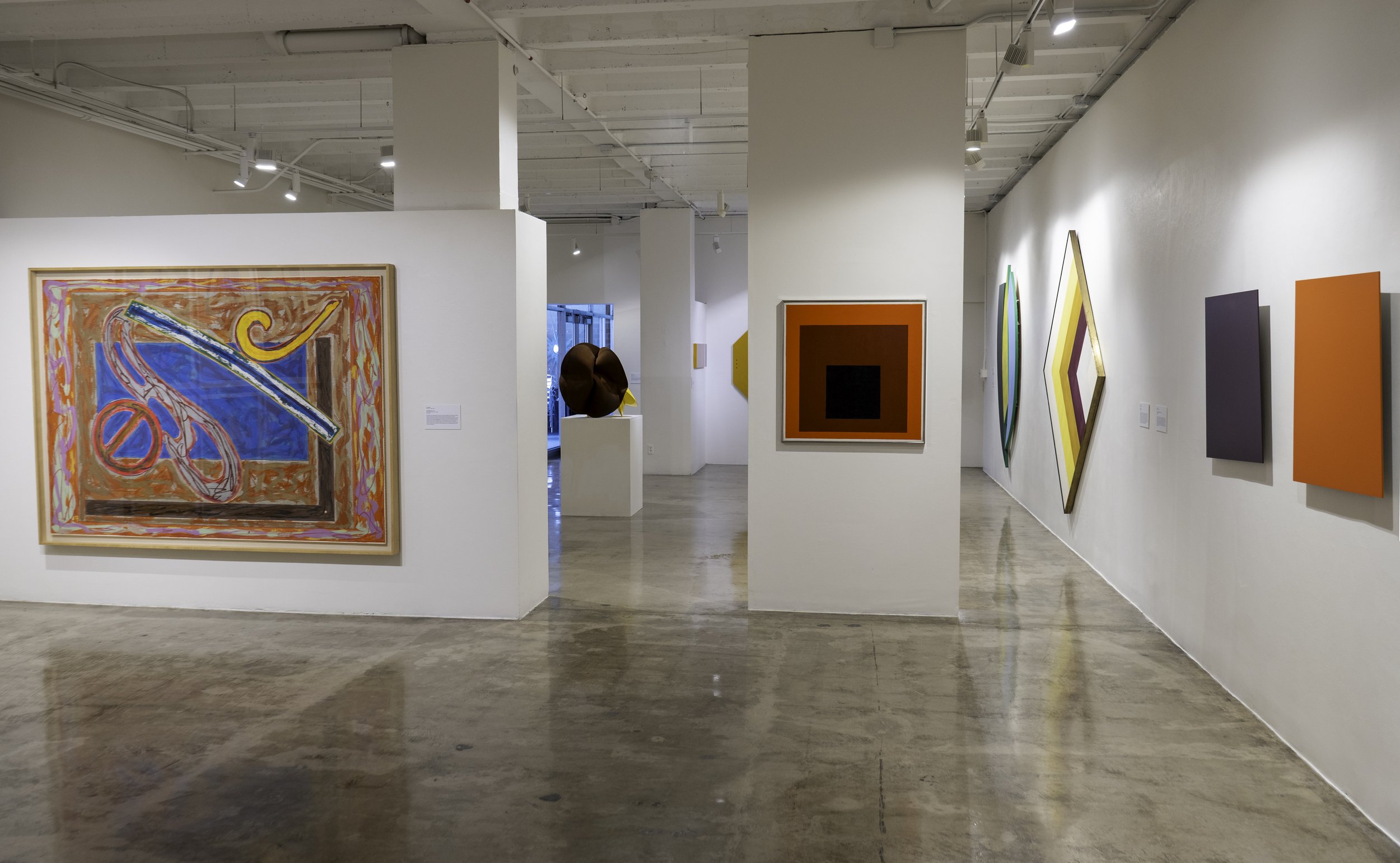
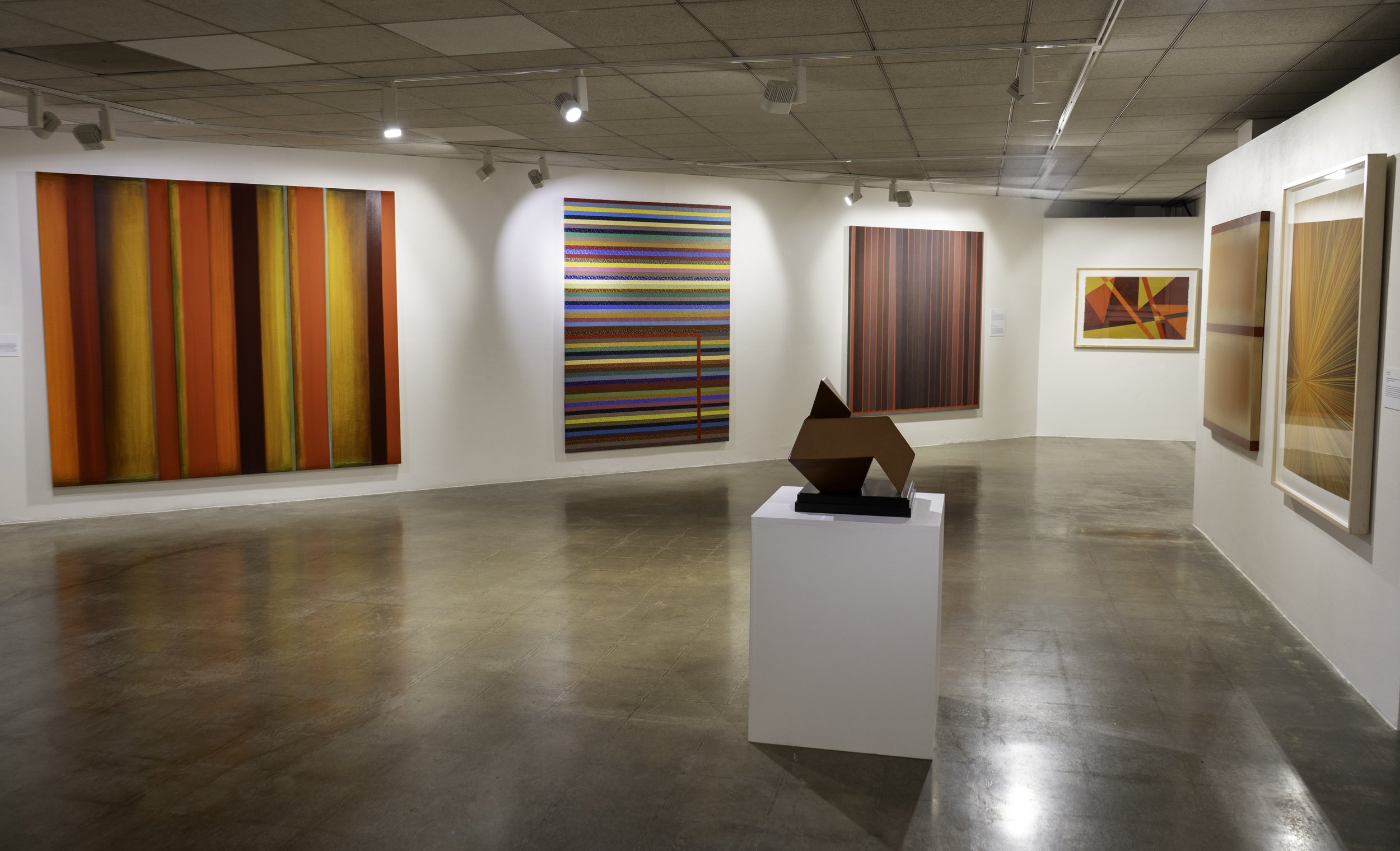
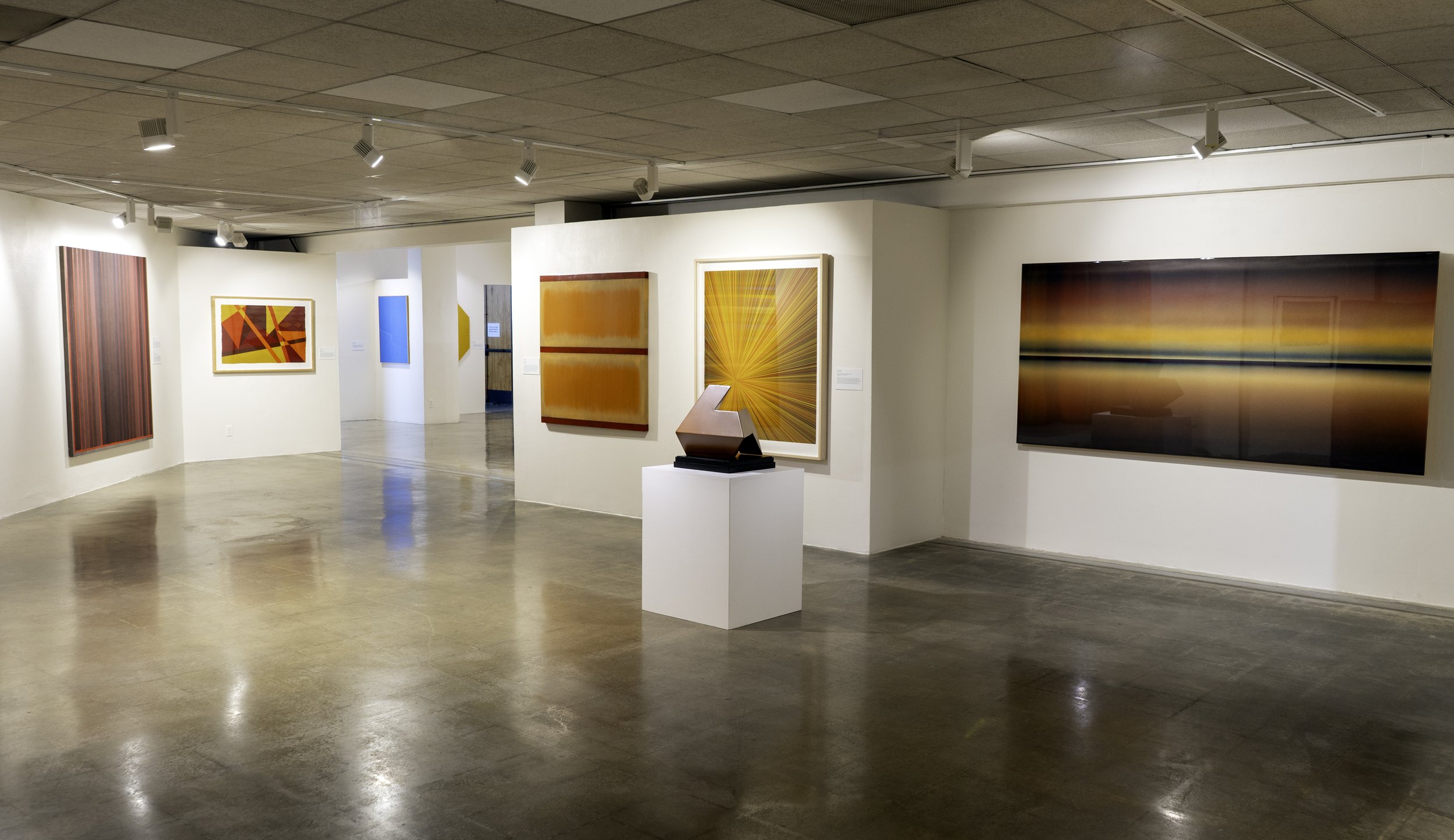

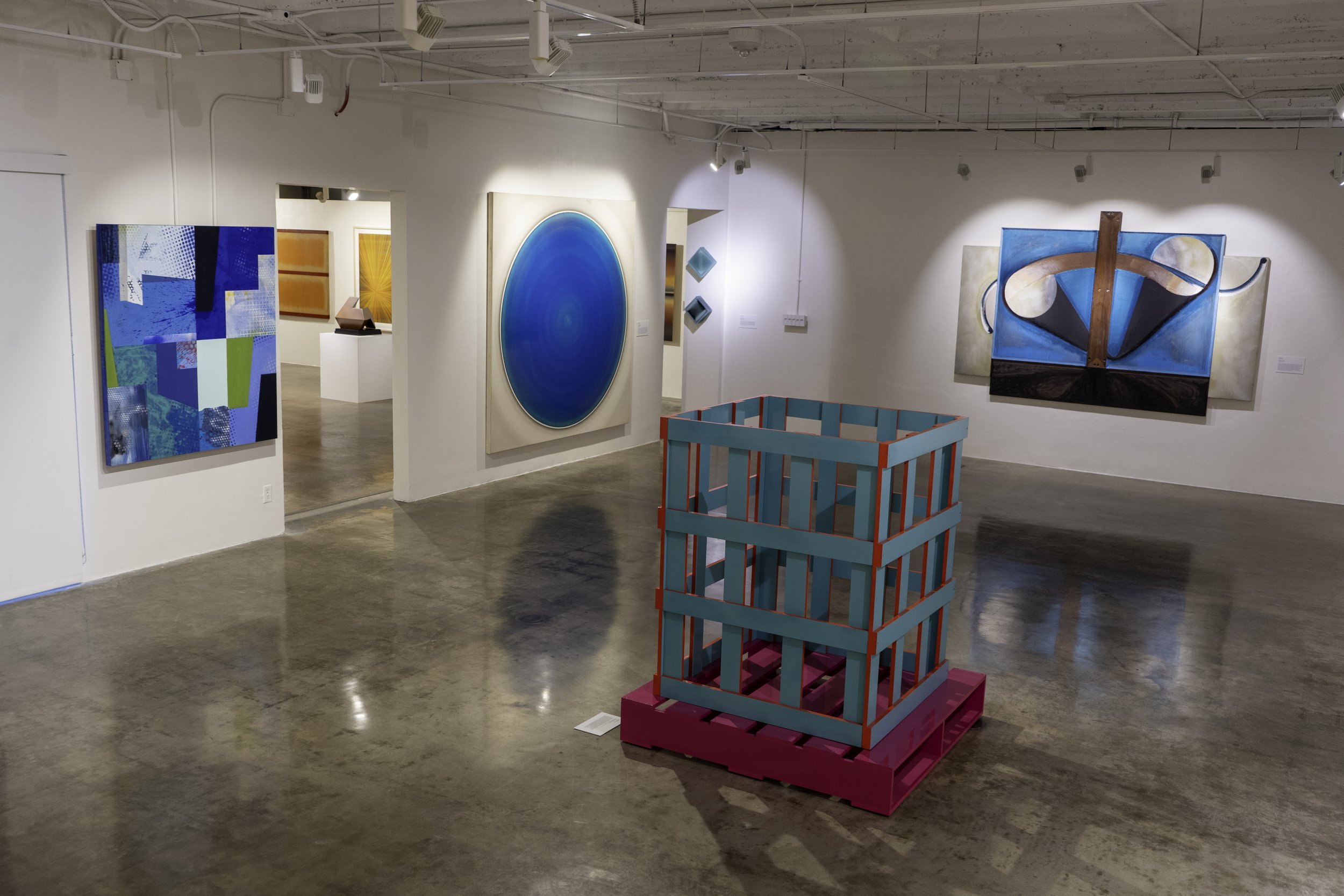
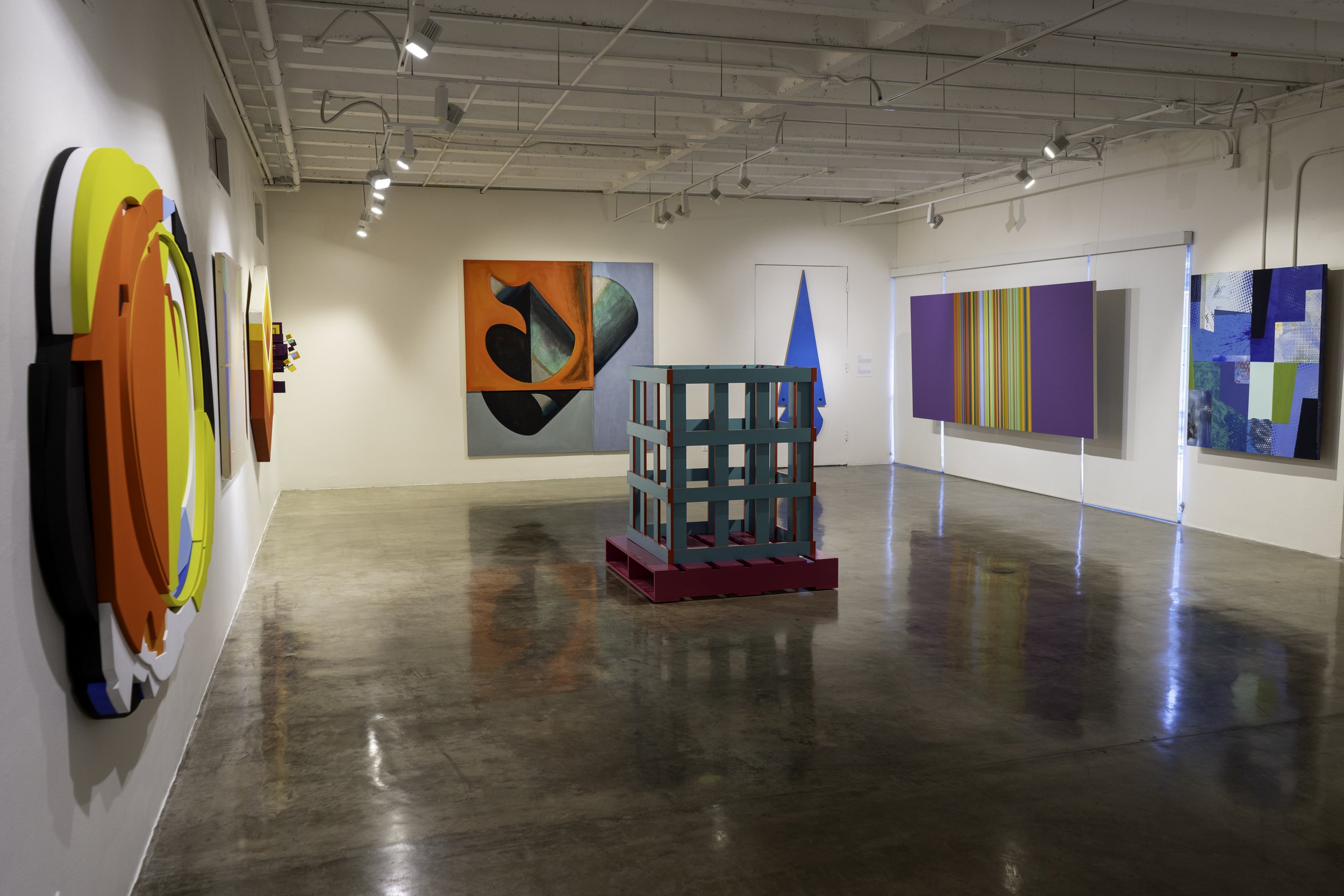
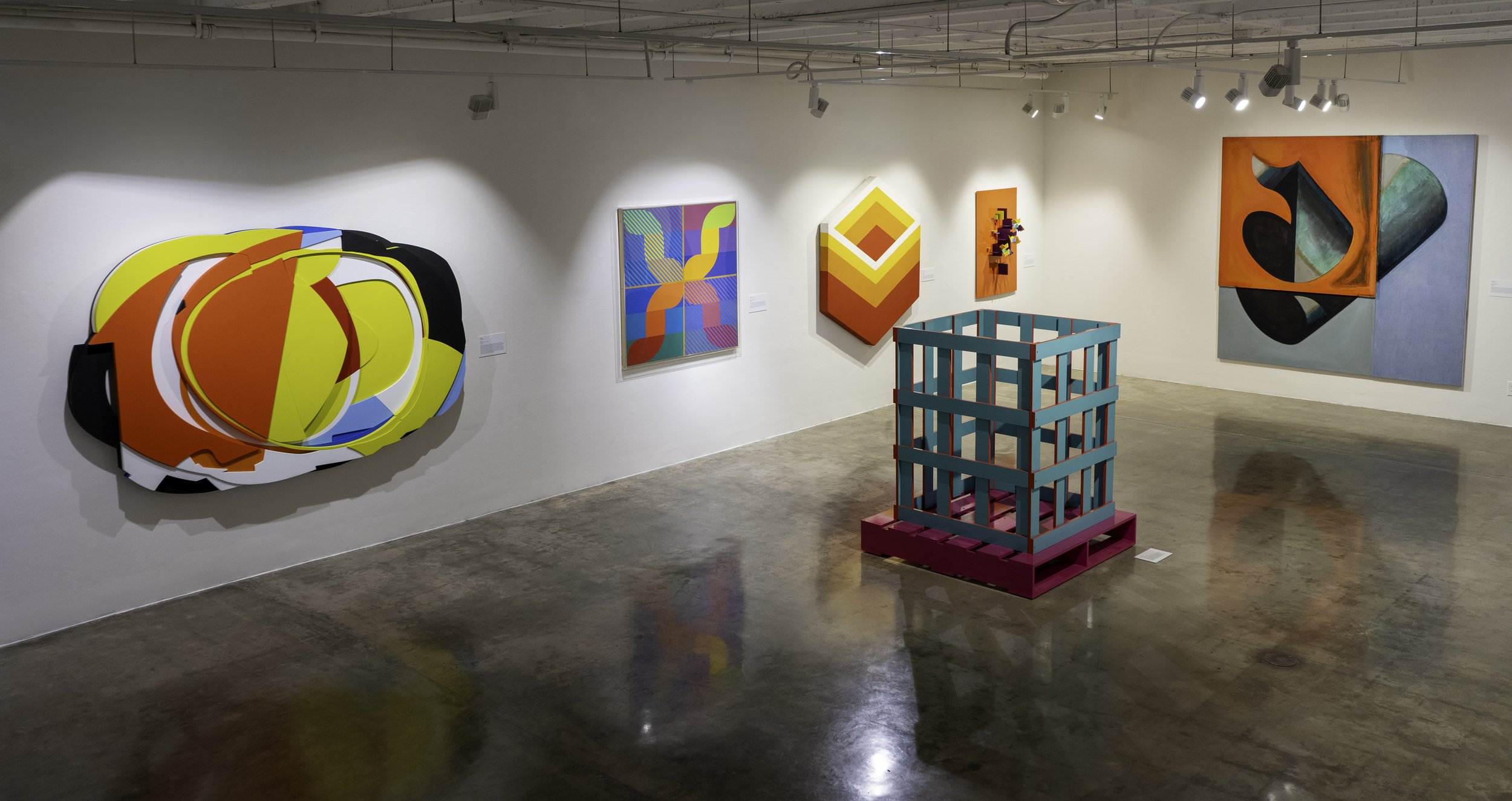
Featured Artists
Jason Adkins, Josef Albers, Saradell Ard, Tim Bavington, Charles Biederman, Isaac Brest, Casper Brindle, Tom Burr, S. Byrne, Ronald Davis, Tim Ebner, Ned Evans, Paul Gadegaard, Betty Gold, Daniel Jackson, Donald Judd, Anish Kapoor, Ellsworth Kelly, Melissa Kretschmer, Sol Lewitt, Vladimir Llaguno, Joe Lloyd, Pard Morrison, Andy Moses, Kenneth Noland, John Pearson, Brian Porray, Kevin Reinhardt, Michael Rey, Dorothea Rockburne, David Ryan, Robert Schaberl, Arthur Silverman, Frank Stella, Gary Stephan, Jeremy Thomas and Victor Vasarely
Jason Adkins
"Soft Candied Vitamin", 2007
Wood, oil lacquer, clear coating, and MDF 54 x 47 x 37in.
Josef Albers
"Homage to the Square: Upon Arrival", 1958
Oil on Masonite, 32 x 32in.
Saradell Ard
"Spectrum with Stripes", 1982
Acrylic on canvas, 46 x 46in.
Tim Bavington
"Singer", 2004
Acrylic on canvas, 54 x 121.5 in.
Charles Biederman
"Work No. 2, Monet", 1981-82
Painted aluminum construction, 41.5 x 29.25 x 11 in.
Isaac Brest
"American Fairy Tales", 2014
Painter's tape, sheetrock, and wood, 40 x 34in.
Casper Brindle
"Heaven or Las Vegas", 2016
Acrylic, automotive paint, and resin on panel, 48 x 96in.
Tom Burr
"Folding Screen", 2004
Plywood, wood molding, plexi-mirror, black anodized hardware, 70.87 x 70.87 x 2.36 in.
S. Byrne
Untitled, 1974
Acrylic on canvas, 60 x 52in
Ronald Davis
"Dodecagon in a Room", 1995
Watercolor on paper, 22.5 x 30.25 in.
"Sapphire Slabs", 1985
Celvinyl acrylic copolymer and nova gel on canvas, 45 x 108in.
"Upright Hexagon", 1995
Watercolor on paper, 23 x 30in.
"Wedge Weave", 1978
Acrylic on canvas, 69.75 x 65.25 in.
Tim Ebner
Untitled (Blue and Black), 1988
Resin and fiberglass on wood, 82 x 92in.
Ned Evans
"Got Red", 2008
Acrylic on canvas, 80 x 90in.
"Quarter", 2023
Acrylic on canvas, 53.5 x 47.5 x 1.75 in.
Paul Gadegaard
Untitled (Primary Colors), 1983
Oil on Canvas, 58 x 38in.
Betty Gold
"Picos 1", 2010
Acrylic on handmade paper, 25.25 x 40 in.
Daniel Jackson
"10,000 to a Point Somewhere, Red/Yellows, No. 1", 2006
Archival inkjet print on archival paper, 46.5 x 40 in.
Donald Judd
Untitled, 1984
Painted aluminum, 11.75 x 11.75 x 35 in.
Anish Kapoor
"Blood Mirror III", 2000
Stainless steel and lacquer, 72.5 x 72.5 x 18.13 in.
Ellsworth Kelly
"Black Panel", 1982
Painted aluminum, 36.5 x 36.75 x 1.75 in.
"Dark Red-Violet Panel", 1982
Painted aluminum, 29.87 x 30 x 1.75 in.
"Red-Orange Panel", 1982
Painted aluminum, 29.75 x 29.75 x 1.75 in.
"White Panel", 1982
Painted aluminum, 36.75 x 36.5 x 1.75 in.
"Yellow Panel", 1982
Painted aluminum, 30 x 32 x 1.75 in.
Melissa Kretschmer
"Davis' Diamond", 2001
Glass, beeswax, ink, parafin & silicone, 8.5 x 8.5 x 4.5in.
"Dukes Diamond", 2001
Glass, beeswax, ink, parafin & silicone, 9 x 9 x 3.75in.
Sol Lewitt
"Bands in Four Directions", 1991
Gouache on paper, 29.75 x 22.25 in.
Vladimir Llaguno
"Lingua Braille", 1982
Acrylic on canvas, 81.5 X 62.25 x 1in.
Joe Lloyd
"Incline", 2014
Acrylic on canvas, 72 x 120 x 1.5in.
Pard Morrison
"Hybrid L43", 2004
Patinated aluminum, 48 x 48 x 1.5in.
"So Nice to Be Here with You", 2008
Patinated aluminum, 12 x 36 x 1.5in.
Andy Moses
"Echoes of Light", 2008
Acrylic on canvas, 16 x 20in.
Kenneth Noland
"Autumn Spirit", 1965
Acrylic on canvas, 84.8 x 84.8 in.
"Flares: Cup", 1991
Acrylic on canvas, 85.5 x 60.5 in.
John Pearson
"Memory No. 1", 2012
Acrylic on canvas over wood panel, 48 x 22 x 2.25 in.
Kevin Reinhardt
"Church of St. Petri, Catechism Room (red)", 2022
Oil, gesso, and thread on dyed canvas, 71 x 67 in.
Michael Rey
"Heavy Bamboo", 2014
Oil on Plasticine clay on panel, 82 x 25 x 1.5 in.
"Qatchy Satge", 2014
Oil on Plasticine clay on panel, 52 x 42 in.
Dorothea Rockburne
"The Glory of Doubt, Pascal", 1987
Oil and gold leaf on linen, 56.25 x 108.5 x 5 in.
David Ryan
“LHC”, 2008
Acrylic and Flashe on Corafoam, 58 x 93 x 4 in.
Robert Schaberl
Untitled (Turquoise), 2003
Mixed media on canvas, 82.5 x 82.5 x 1.75 in.
Arthur Silverman
Untitled No. 4, 1997
Aluminum, 18 x 27 x 15 in.
Frank Stella
“Bonin Night Heron”, 1979
Hand-painted screen-print on paper, 60.88 x 84 in.
“Sinjerli Variations Squared with Colored Grounds”, 1977–81
Lithographic prints on paper (suite of six), 32.5 x 32.5 in.
Gary Stephan
“Almost Human”, 1985
Acrylic, canvas and wood, 70 x 105 in.
“One of Four Futures”, 1984
Acrylic on canvas, 84 x 84 in.
Jeremy Thomas
“Iseki Yellow”, 2007
Mild steel and powder coat, 29 x 34.5 x 23 in.
Victor Vasarely
“Tridim”, 1980
Painted wood, 17.25 x 9.5 in.

